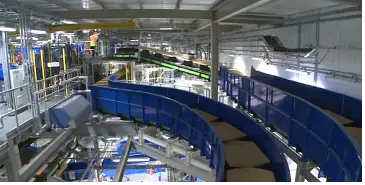A Career Built on Stakeholder Excellence and Aviation Innovation
When a new airport terminal opens or a major redevelopment reaches completion, the moment passengers first step inside is only the final chapter of a much larger story. Behind the scenes, an Operational Readiness and Airport Transfer (ORAT) programme ensures that the facility operates flawlessly from day one.
For over 30 years, I have worked at the intersection of airport infrastructure development, airline operations, and stakeholder management, shaping projects that bring this critical process to life.

The phases typically include:
- Initiation & Planning – Establishing governance, scope, and risk frameworks.
- Design Interface – Ensuring construction reflects operational requirements, from airside taxiways to terminal passenger flows.
- Operational Preparation – Developing SOPs, training staff, and drafting contingency plans.
- Testing & Trials – Running integrated simulations that mirror real passenger journeys and peak-load scenarios.
- Transfer/Activation – The live cutover of systems and the physical move to the new facility.
- Post-Opening Support – Stabilising operations and embedding lessons learned.
What is ORAT?
ORAT is a structured, integrated approach that prepares new or redeveloped airport facilities for full operational functionality. From planning and design interface to integrated trials and post-opening support, ORAT minimises risk, aligns stakeholders, and validates every system and process before the first flight departs.

My Role in ORAT Programmes
During my tenure at Gatwick Airport, I oversaw and participated in major airport infrastructure projects where ORAT was central to success. From airfield resurfacing and baggage system upgrades to terminal extensions and new piers, I worked with construction teams, regulators, and airlines to integrate operational readiness from the earliest planning stages.
Examples of the forums and programmes where I led or contributed include:
- Airline Operators Committee (AOC) and Airport/Airline Consultative Committee (ACC) – building consensus among airlines and airport leadership.
- CAA Regulatory Consultations – ensuring compliance with economic regulation, service quality schemes, and passenger service mandates.
- Common Use Passenger Processing Systems (CUPPS) – integrating IT platforms for check-in and boarding, ensuring seamless multi-airline operations.
- Capital Investment Quinquennium Reviews – balancing long-term master planning with the immediate needs of airlines and passengers.
In each of these settings, the essence of ORAT—meticulous planning, stakeholder alignment, and risk mitigation—was a constant.
A Global Perspective
My consultancy, Sky Aviation Global Ltd, now brings this experience to a worldwide audience. I advise airports and airlines on ORAT programmes and related strategies, including:
- Greenfield airport builds across emerging markets where infrastructure must be activated from scratch.
- Major infrastructure programmes such as Gatwick’s North Terminal Extension (NTX), North Terminal Forecourt (NTF), North Terminal Interchange (NTI), and South Terminal Baggage & Pier 1—projects that demanded intricate stakeholder coordination to transition live operations without disruption.
- Airside operational enhancements, including runway and taxiway reconfigurations that require precise cutover planning.

ESG and Innovation
Today’s ORAT programmes cannot be separated from environmental, social, and governance (ESG) imperatives. Through initiatives like carbon reduction (Scope 1, 2 & 3) and the introduction of Sustainable Aviation Fuel (SAF) strategies, I help clients embed sustainability in their readiness planning.
My work with Avitech Aviation Solutions—including innovations like Avitech Clean, a 100% plant-based cleaner, and Aircraft Fuel Saving Solutions (AFSS)—demonstrates how operational efficiency and environmental stewardship can move in lockstep.
Lessons for a Seamless Opening
The common denominator in every successful ORAT programme is stakeholder engagement. Whether aligning ground handlers and airlines, training thousands of frontline staff, or running live passenger trials, the key is early, continuous collaboration.
From my experience:
- Plan early—18 to 36 months before opening is ideal.
- Engage everyone—from regulators to concessionaires.
- Test relentlessly—systems, people, and contingency plans.
Closing Thoughts
A successful airport opening isn’t about cutting ribbons; it’s about the first passenger experience being as smooth as the thousandth. That requires a methodical ORAT process and the ability to manage diverse stakeholders with a clear, shared vision.
As I continue to support airports, airlines, and investors through Sky Aviation Global Ltd, my focus remains the same: deliver operational readiness, optimise performance, and build aviation infrastructure that works perfectly from day one—and for decades thereafter.
Let’s connect if you’re planning a new terminal, runway expansion, or innovative aviation project. Together, we can ensure that when the first passengers arrive, the airport is truly ready.
